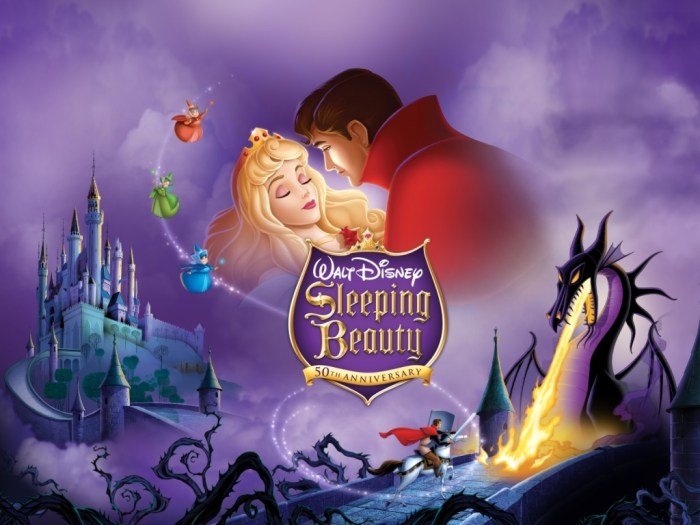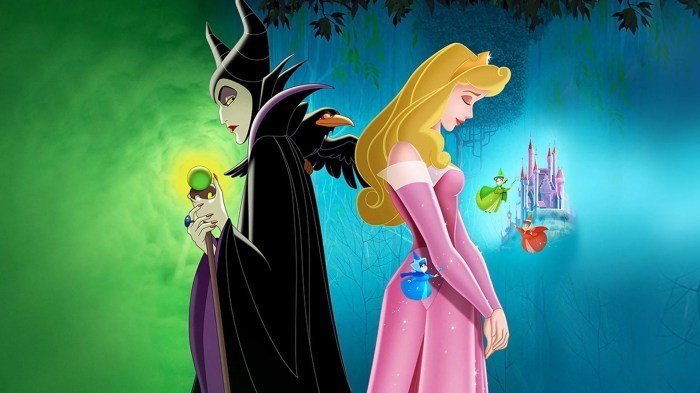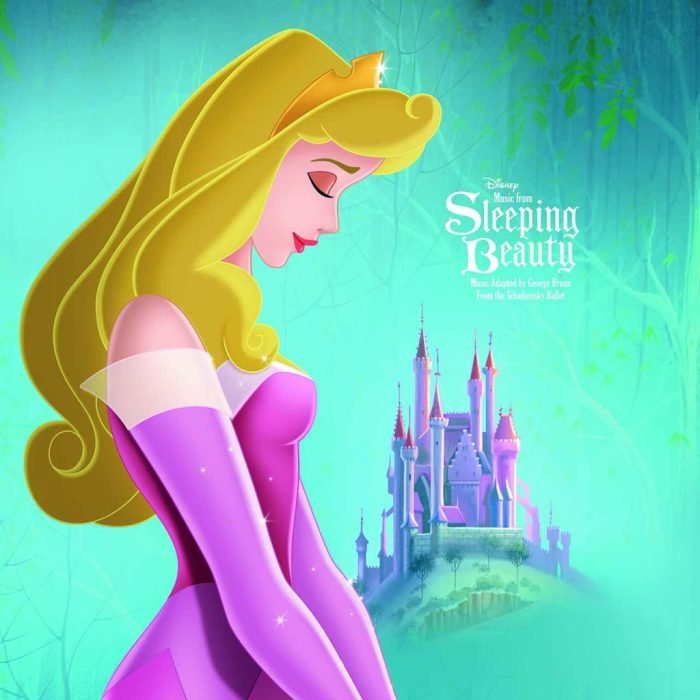Aurora Sleeping Beauty, a beloved fairy tale, has captivated audiences for centuries with its enchanting narrative of a princess cursed to sleep for a hundred years. The story, woven with elements of magic, love, and resilience, explores themes of innocence, vulnerability, and the transformative power of true love.
From its origins in European folklore to its modern-day adaptations, the legend of Aurora Sleeping Beauty has evolved and resonated across cultures. The story’s enduring popularity stems from its timeless themes and its ability to connect with readers and viewers on a deeply emotional level.
The Legend of Aurora Sleeping Beauty

The tale of Aurora Sleeping Beauty, a princess cursed to sleep for a hundred years, is a timeless classic woven into the fabric of fairy tales. This captivating story, brimming with enchantment and suspense, has captivated audiences for centuries, transcending cultures and inspiring numerous adaptations.
Origins and Evolution of the Legend
The origins of the Sleeping Beauty myth can be traced back to ancient folklore and oral traditions. The story’s roots lie in various cultures, each contributing to its evolution and metamorphosis.
- Ancient Greece:The Greek myth of Persephone, abducted by Hades to the underworld, bears resemblance to the Sleeping Beauty motif. Persephone’s mother, Demeter, mourns her absence, causing the earth to become barren. This myth explores themes of fertility, loss, and the cycle of life and death, elements also present in Sleeping Beauty.
- Medieval Europe:The story of Sleeping Beauty emerged in medieval Europe, with the earliest known written version being “Perceforest” (1330-1340). This French prose romance introduced the elements of a sleeping princess, a magical spindle, and a prince who awakens her.
- The Renaissance:The Italian writer Giambattista Basile’s “Pentamerone” (1634) included the story of “Sun, Moon, and Talia,” a tale remarkably similar to Sleeping Beauty. This version introduced the malevolent fairy and the curse, crucial elements of the modern-day story.
- The 17th Century:The French writer Charles Perrault’s “The Sleeping Beauty in the Wood” (1697) is considered the most influential version of the tale. Perrault’s version introduced the iconic “Sleeping Beauty” title, the “Hundred Years’ Sleep” motif, and the wicked fairy who casts the curse.
- The Brothers Grimm:In the 19th century, the Brothers Grimm included their version of the tale, “Briar Rose,” in their collection of fairy tales. Their version emphasized moral lessons and the importance of obedience, reflecting the social norms of the time.
Interpretations and Symbolism
The Sleeping Beauty myth has been interpreted in various ways, with scholars and readers finding different layers of meaning within its narrative.
- Coming of Age:The story can be viewed as a metaphor for the transition from childhood to adulthood, with the princess’s sleep symbolizing the period of transformation and growth.
- Femininity and Power:The Sleeping Beauty myth has been analyzed in terms of its portrayal of femininity and power. The princess’s vulnerability and her eventual awakening can be seen as representing the complex nature of female agency and the potential for both submission and liberation.
- The Power of Love:The story emphasizes the transformative power of love, as the prince’s kiss awakens the princess from her slumber. This motif highlights the potential of love to overcome adversity and bring about positive change.
- The Nature of Evil:The presence of the malevolent fairy highlights the enduring theme of good versus evil, a common thread in many fairy tales. The fairy’s envy and her desire to harm the princess symbolize the darker aspects of human nature.
Comparisons with Other Fairy Tales
The Sleeping Beauty myth shares similarities with other fairy tales and legends, each offering unique perspectives on themes of sleep, enchantment, and transformation.
- “Snow White” by the Brothers Grimm:Both stories involve a princess who is threatened by a jealous female figure and must rely on the help of a prince to overcome adversity.
- “Rapunzel” by the Brothers Grimm:Like Sleeping Beauty, Rapunzel is imprisoned in a tower and must be rescued by a prince. Both stories highlight the theme of entrapment and the desire for freedom.
- “The Frog Prince” by the Brothers Grimm:This tale explores the idea of transformation and the importance of looking beyond appearances. The princess’s initial disgust at the frog’s appearance mirrors the initial rejection of the prince in Sleeping Beauty.
The Character of Aurora Sleeping Beauty

Aurora, the titular character of the classic fairy tale “Sleeping Beauty,” is a beloved figure known for her beauty, grace, and enduring spirit. While she may seem like a passive character at first glance, a closer examination reveals a complex and compelling individual who embodies themes of innocence, vulnerability, and resilience.
Aurora, the Sleeping Beauty, is a classic tale of a princess cursed to sleep for a hundred years. While the story is fictional, it highlights the importance of healthcare, just like the crucial role played by NYC Health + Hospitals/Elmhurst in providing essential medical services to the community.
Even in a fairytale world, the need for medical expertise and care remains paramount, much like it does in real life.
Aurora’s Character Arc
Aurora’s journey unfolds through a series of significant events that shape her character. She begins as a young princess, innocent and unaware of the dangers that lurk in the world. However, her life takes a dramatic turn when she is cursed by the vengeful Maleficent, who condemns her to a death-like sleep.
This curse becomes a catalyst for Aurora’s growth and development. Despite being forced into a prolonged slumber, Aurora remains a symbol of hope and beauty, awaiting her awakening. Upon her eventual awakening, she is no longer the naive princess she once was.
She has matured and gained a deeper understanding of the world around her, embracing her destiny as a princess and a symbol of love and light.
The Significance of Aurora’s Beauty
Aurora’s beauty is a central element in the story, both literally and metaphorically. It is the catalyst for Maleficent’s curse, highlighting the power and danger of envy and jealousy. However, Aurora’s beauty is also a source of strength and resilience.
Aurora, the Sleeping Beauty, is a timeless tale of enchantment and slumber. While we might not all be cursed to sleep for a hundred years, we can still find ways to awaken our inner beauty and strength. If you’re looking for a way to boost your energy and fitness, consider checking out vasa fitness near me.
Just like Aurora’s awakening, a healthy lifestyle can help you reach your full potential and embrace the beauty of a strong, vibrant you.
It represents the enduring power of love, hope, and light that cannot be extinguished by evil. Her beauty is not merely a physical attribute but a reflection of her inner spirit, a symbol of the good that triumphs over darkness.
Themes of Innocence, Vulnerability, and Resilience
Aurora’s character embodies the themes of innocence, vulnerability, and resilience. As a young princess, she is innocent of the world’s harsh realities, symbolizing the purity and potential of youth. Her vulnerability is evident in her susceptibility to Maleficent’s curse, highlighting the fragility of innocence in the face of evil.
However, Aurora’s resilience is showcased in her ability to overcome the curse and emerge from her slumber, symbolizing the triumph of hope and love over adversity. Her character serves as a reminder that even in the face of darkness and despair, there is always the potential for renewal and growth.
The Curse and the Sleep

The curse placed upon Aurora, the central figure in the tale of Sleeping Beauty, is a defining element of the story. It is a curse that plunges her into a deep slumber, effectively pausing her life and leaving her vulnerable to the whims of fate.
The curse’s nature and its impact on Aurora’s life, along with the symbolism of sleep within the narrative, are key aspects to understand the deeper themes explored in the story.
The Nature of the Curse
The curse, often attributed to a vengeful fairy, is a powerful magic spell that compels Aurora to prick her finger on a spindle and fall into a deep sleep. The curse’s severity is such that it not only affects Aurora but also extends to the entire kingdom, plunging it into a state of slumber alongside its princess.
This act of magical retribution highlights the themes of fate and the unpredictable nature of power. The curse’s impact on Aurora’s life is profound, effectively halting her growth and development until she is awakened by true love’s kiss. This creates a sense of suspense and anticipation within the narrative, as the reader awaits the moment of her awakening.
The Symbolism of Sleep
Sleep, in the context of the Sleeping Beauty story, transcends its literal meaning. It symbolizes a state of vulnerability, passivity, and the fragility of life. Aurora’s sleep can be interpreted as a metaphor for death, as she is effectively rendered lifeless until she is awakened.
However, it also symbolizes a state of potential and the possibility of rebirth. The curse, in its ultimate manifestation, becomes a catalyst for Aurora’s transformation. It allows her to transcend her passive state and embrace her true destiny.
Variations of the Curse
The curse and its consequences have been interpreted differently across various versions of the Sleeping Beauty story. While the core elements remain consistent
- the curse, the sleep, and the awakening
- the specifics vary. In some versions, the curse is not limited to Aurora and extends to the entire kingdom, while in others, it is solely focused on the princess. The duration of the sleep also varies, with some versions depicting a century-long slumber and others depicting a shorter period.
These variations reflect the different cultural and societal influences that have shaped the story over time.
Thematic Analysis

The story of Aurora Sleeping Beauty explores several timeless themes that resonate with audiences across generations. These themes delve into the complexities of human nature, societal expectations, and the enduring power of love and hope.
Aurora, the Sleeping Beauty, is a timeless symbol of ethereal beauty. Her story reminds us that true beauty lies within, just as the allure of a carefully curated beauty box, like the Allure Beauty Box , can reveal hidden gems.
Whether it’s a princess awakening from a slumber or a new skincare product, the unveiling of beauty can be truly enchanting.
Themes Explored in the Story of Aurora Sleeping Beauty
The story of Aurora Sleeping Beauty explores several timeless themes that resonate with audiences across generations. These themes delve into the complexities of human nature, societal expectations, and the enduring power of love and hope.
- Good vs. Evil:The central conflict in the story is the battle between good and evil, represented by the benevolent fairies and the malicious Maleficent. This theme highlights the universal struggle between light and darkness, virtue and vice, and the consequences of choosing one path over the other.
- The Power of Love:Love plays a pivotal role in overcoming the curse and saving Aurora. The love of her parents, the fairies, and ultimately Prince Phillip, breaks the spell and restores harmony to the kingdom. This theme emphasizes the transformative power of love and its ability to conquer adversity.
- The Importance of Courage:Aurora’s bravery in facing the curse and her ultimate awakening exemplify the importance of courage. Prince Phillip’s willingness to confront Maleficent and rescue Aurora also underscores the theme of courage in the face of danger.
- The Cycle of Life and Death:The curse and Aurora’s subsequent sleep symbolize the cycle of life and death. The curse represents the inevitability of death, while Aurora’s awakening signifies the promise of rebirth and renewal.
- The Power of Destiny:Aurora’s fate is predetermined by the curse, highlighting the theme of destiny and its influence on our lives. However, the story also suggests that destiny is not always fixed and can be altered by the choices we make.
The Social and Cultural Context of the Story
The story of Aurora Sleeping Beauty was originally written in the 17th century and reflects the social and cultural norms of that time.
- Patriarchal Society:The story reinforces the patriarchal structure of society, with male characters like the king and Prince Phillip holding positions of power and authority. Aurora is largely passive, waiting for her prince to rescue her, reflecting the societal expectations of women at the time.
- Importance of Marriage:The story emphasizes the importance of marriage and the role it plays in maintaining social order. Aurora’s marriage to Prince Phillip represents a union of two kingdoms and ensures the continuation of the royal lineage.
- The Power of Fairy Tales:Fairy tales were a popular form of entertainment and storytelling in the 17th century, serving as a way to teach moral lessons and convey cultural values. Aurora Sleeping Beauty exemplifies the power of fairy tales to captivate audiences and convey important messages about life and society.
The Enduring Power of the Aurora Sleeping Beauty Legend
The story of Aurora Sleeping Beauty has endured for centuries, captivating audiences of all ages. Its enduring power can be attributed to several factors.
- Universal Themes:The story explores timeless themes that resonate with people across cultures and generations. The themes of good vs. evil, love, courage, and destiny are universal human experiences that continue to hold meaning and relevance.
- Visual Appeal:The story’s imagery, particularly the iconic image of Aurora sleeping in the enchanted forest, is visually captivating and has inspired countless artistic interpretations.
- Cultural Influence:The story has had a significant influence on popular culture, inspiring countless adaptations, retellings, and spin-offs in various forms of media, including film, television, literature, and music.
Visual Representations: Aurora Sleeping Beauty

The visual representation of Aurora Sleeping Beauty has evolved over time, reflecting changing artistic styles and cultural interpretations. From classic paintings to modern films, Aurora’s image has captured the imaginations of artists and audiences alike. This section explores various artistic representations of Aurora Sleeping Beauty, examining their unique features and symbolic meanings.
Comparison of Artistic Representations
This section provides a comparative analysis of different artistic representations of Aurora Sleeping Beauty, highlighting the similarities and differences in their portrayal.
| Representation | Medium | Description | Key Features | Symbolism |
|---|---|---|---|---|
| “Sleeping Beauty” by Arthur Rackham (1909) | Painting | A delicate and ethereal depiction of Aurora asleep in a forest clearing, surrounded by flowers and birds. | Aurora’s pale skin, flowing hair, and delicate features emphasize her innocence and vulnerability. The surrounding nature symbolizes her connection to the natural world. | The flowers represent beauty and fragility, while the birds symbolize freedom and the passage of time. |
| “Sleeping Beauty” by Frank Dicksee (1895) | Painting | A more dramatic portrayal of Aurora, lying in a deep sleep in a grand chamber, surrounded by figures in mourning. | The somber atmosphere and the figures in mourning emphasize the tragedy of Aurora’s curse. The grandeur of the chamber reflects her royal status. | The darkness and shadows symbolize the curse and the power of evil, while the figures in mourning represent the sorrow and loss caused by Aurora’s sleep. |
| “Sleeping Beauty” by Walt Disney (1959) | Animated Film | A vibrant and whimsical portrayal of Aurora, featuring her as a young, beautiful princess with flowing hair and a cheerful disposition. | Aurora’s animated features bring her to life, while her vibrant colors and graceful movements emphasize her youthful energy and charm. | The animation style reflects the fairytale nature of the story, while the colors and music create a sense of wonder and magic. |
Design of a Visual Representation
This section proposes a visual representation of Aurora Sleeping Beauty, incorporating elements from the story and its symbolism.
The visual representation would depict Aurora in a deep sleep, surrounded by a swirling vortex of colors and symbols.
The colors would represent the different aspects of Aurora’s character, such as her innocence (white), her beauty (pink), and her strength (gold). The symbols would include a spinning wheel (representing the curse), a rose (representing love and beauty), and a crown (representing her royal status).
The overall effect would be one of beauty, mystery, and hope.
Evolution of Aurora Sleeping Beauty’s Image
This section presents a visual timeline depicting the evolution of Aurora Sleeping Beauty’s image in popular culture, showcasing how her representation has changed over time.
The timeline would begin with the earliest known artistic representations of Aurora, such as the paintings by Arthur Rackham and Frank Dicksee.
It would then progress through the various adaptations of the story, including the Disney animated film and modern interpretations. The timeline would illustrate how Aurora’s image has evolved from a delicate and ethereal figure to a more dynamic and independent princess.
Ending Remarks

The tale of Aurora Sleeping Beauty serves as a reminder of the enduring power of hope and the transformative nature of love. It invites us to reflect on the themes of innocence, vulnerability, and resilience, reminding us that even in the face of adversity, true love can prevail.
The story’s enduring legacy continues to inspire artists, writers, and filmmakers, ensuring that Aurora Sleeping Beauty remains a cherished part of our cultural heritage.
Frequently Asked Questions
What is the significance of the number 100 in the story?
The number 100 represents a long period of time, signifying the depth of the curse and the time Aurora must sleep. It emphasizes the transformative nature of the curse and the length of time it takes for true love to prevail.
How does the story of Aurora Sleeping Beauty relate to the concept of beauty?
The story explores the idea of beauty in a complex way. Aurora’s beauty is a catalyst for the curse, yet it also plays a role in her awakening. The story suggests that true beauty lies beyond physical appearance and is connected to inner qualities like resilience and grace.